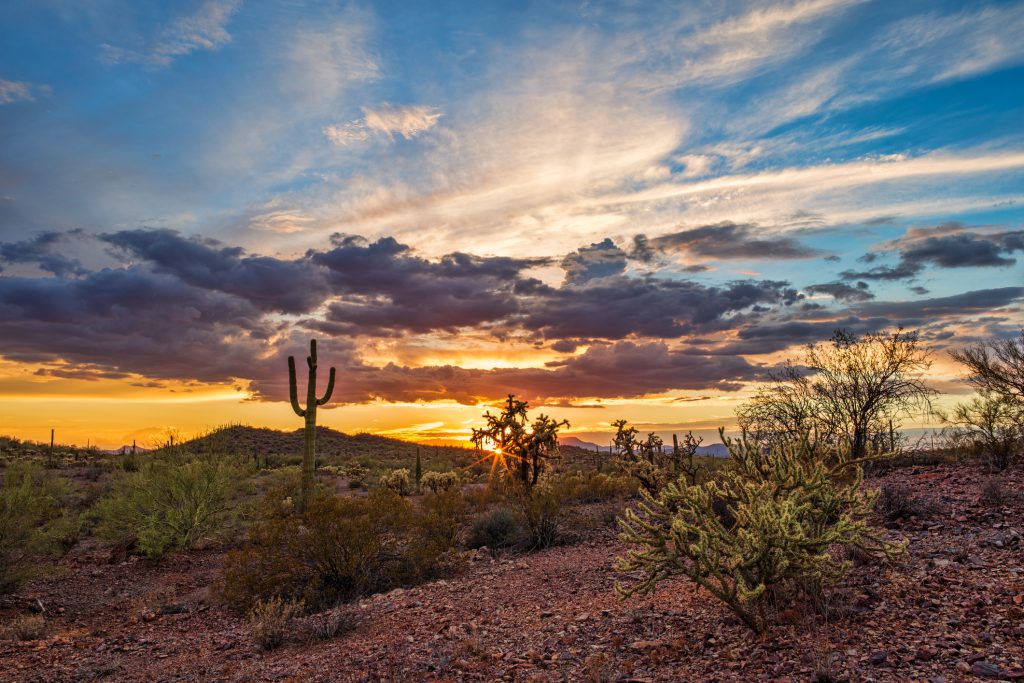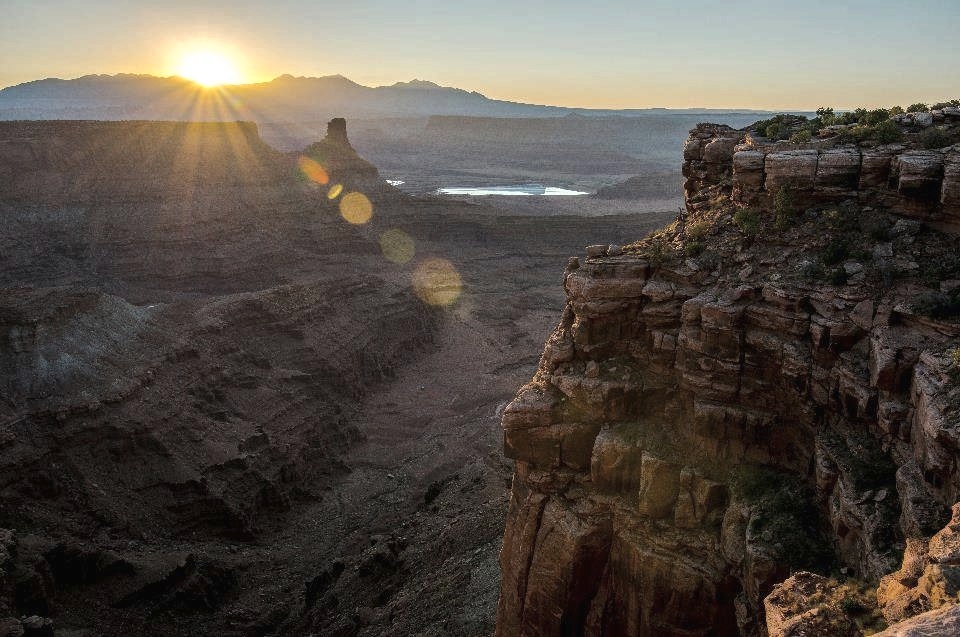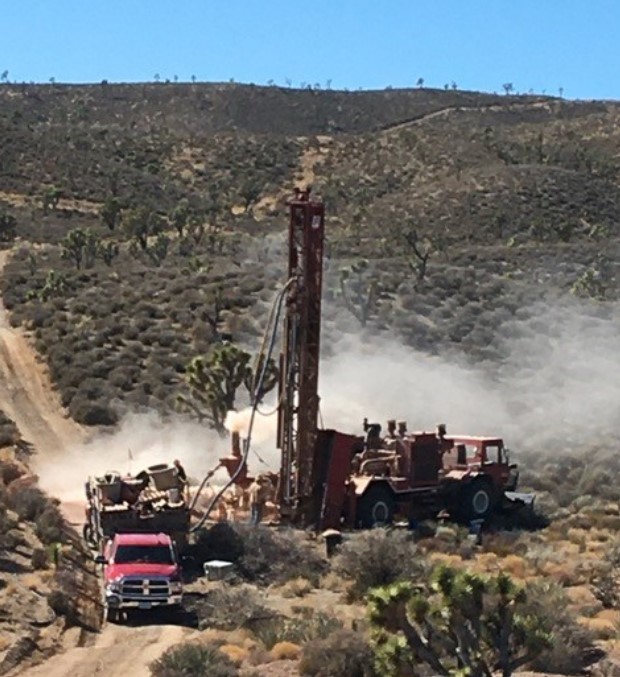Arizona’s mining industry sparks resurgence of precious metals exploration

The southwestern U.S. state of Arizona, best known for the Grand Canyon – the mile-deep chasm carved by the Colorado River – is the 48th state and last of the contiguous states to be admitted to the Union, achieving statehood on February 14, 1912. The state has a long association with mineral exploration and mining. Early Native Americans mined surface outcrops of salt, clays, hematite, quartz, obsidian, stone, turquoise, and coal. In the late 1600s Spanish explorers searched for metallic deposits especially gold and silver.
By the mid 1800’s mining was booming in the territory leading the growth of hard rock mining yielding large volumes of copper, lead, zinc, silver, and gold ore. Today though, copper remains Arizona’s most abundant and valuable metallic mineral product. Often referred to as the Copper state, Arizona provided over 70% of domestic copper production in the U.S. in 2020.
Arizona has two major types of copper deposits: Porphyry Copper in southern and central Arizona; and the Volcanogenic Massive Sulphide Copper of the now defunct United Verde Mine in Jerome in central Arizona. Once one of the largest copper mines in the U.S, the mine produced over 2 billion pounds of copper, silver, and gold before it closed down in the 50’s.
Most of the copper mined in Arizona comes from porphyry copper deposits. These are copper ore deposits associated with intrusive igneous rocks similar to granite. Porphyry describes the typical texture of these rocks, in which individual mineral grains about a tenth to a half inch in size are surrounded by smaller grains that are barely visible to the naked eye. These deposits, formed from saline, metal-bearing fluids expelled from cooling magma. Interaction of the fluid with heated groundwater yields a corrosive liquid that chemically alters rocks adjacent to the intrusion. Porphyry copper deposits commonly yield molybdenum and silver as co-products.
The intrusive activity responsible for Arizona’s porphyry copper deposits occurred about 70 million years ago, in the Earth’s crust deep below the ground surface. The rich metal deposits were subsequently exposed millions of years later by faulting and erosion. Weathering processes, which accompany uplift and erosion, further concentrated the copper. This “secondary enrichment” occurred when pyrite (iron sulphide) oxidized, dissolved in rainwater, and formed an acidic iron sulphate solution that dissolved the main copper-ore mineral, chalcopyrite (copper-iron sulphide). The dissolved copper was redeposited, principally as the mineral chalcocite (copper sulphide).
A second major type of copper deposit in Arizona formed in Precambrian-age volcanic rocks such as those in the United Verde Mine at Jerome. Hot, metal-bearing liquids emerged from springs associated with ancient submarine volcanoes. When this liquid mixed with cold sea water, metallic minerals came out of solution as tiny particles that fell to the sea floor. If a metal-rich hot spring was active for a long time, a thick layer of metal-rich mud accumulated around the spring. These deposits contained copper, lead, zinc, silver, and gold.
Freeport-McMoRan (FCX) is a leading international mining company with headquarters in Phoenix, Arizona. Freeport operate large diverse global assets including the large-scale Morenci minerals district in Arizona. The Morenci Mine is one of the largest copper mines in the world and the largest copper mine in Arizona with an annual production of over 700 million pounds of copper. The mine has been in continuous operation since 1939.
Although Arizona leads in copper production it is also is a major producer of molybdenum and silver and a host of industrial mineral products including crude perlite, zeolites, bentonite, cement, common clay, industrial sand, gravel, gypsum, lime, and salt.
Unlike its neighbouring state of Nevada, historically Arizona was never a significant target for gold exploration even though since the 1700’s the state has produced some 17 million ounces of gold, largely recovered from placer deposits and as a by-product from copper mining. Some geologists believe that there could still be a number of undiscovered placer deposits. There are also theories that the Carlin Trend in Nevada (one of the world’s richest gold mining districts) may extend southward into Arizona due to the overall underlying geological structure of the entire southwest region of the US. (Carlin-type deposits are generally very large hydrothermal deposits of oxide ore, but while the gold is essentially invisible and difficult to detect, it is relatively inexpensive to extract, often in open pits).
Until Northern Vertex Mining Corp. [TSXV-NEE] opened its Moss Mine in 2019, Arizona’s last operating gold mine was the Gold Road mine near Oatman which shut down in 1998. With the recent rise in the price of gold approaching $2000 per ounce, a number of junior exploration companies are revisiting Arizona with an interest in reworking old, abandoned mines and areas of previous gold operations following the old axiom of exploring near existing or past producing mines. Arizona has a number of old abandoned mines that may offer exploration potential. Modern technologies enable explorers to efficiently locate potential deposits, and Arizona has a strong transportation infrastructure and power grid that can help keep operating costs reasonable.
The Moss Mine is an open pit gold-silver operation, with a favourable strip ratio of approximately 1.85:1 (waste to ore) and minimal haul distances to the crushing plant. The ore is processed the ore is through crushing, agglomeration and heap leaching followed by treatment at the on-site Merrill Crowe metal recovery plant and refinery to produce gold and silver doré bars.  According to the Company’s Feasibility Study (2015), throughput at the Moss Mine was expected to be 5,000 tonnes per day, however since commissioning was announced in 2018, throughput has been significantly higher.
Recognising a resurgence in Arizona’s mining industry, the Arizona Board of Regents recently approved the creation of a School of Mining and Mineral Resources at the University of Arizona. The school is expected to make the University of Arizona the premier institution devoted to mineral resources and reshaping mining for the 21st century.
Additionally, Arizona state is a premier location for exploration companies to setup operations, two such companies are GMV Minerals Inc. and Gold Basin Resources Corp.
Gold Basin Resources Corp. [GXX-CSE, GXXFF-OTC] is a company that offers a window into an advanced gold exploration area of Arizona that remains highly prospective yet under-explored.
The company’s flagship Gold Basin property is an oxide gold project in Mohave County, northwest Arizona. The project is situated in a transition zone between the highly-productive gold mineralization of the Walker Lane and Arizona copper belts. Located 90 kilometres southeast of Las Vegas, it is accessible via paved roads, and has ready access to hydro electric power from the Hoover Dam.
It is worth noting that the project was fully-permitted as a heap leach gold operation in the mid-1990s.
Highly-positive drill results and well-defined targets across the 30 square kilometre land holding, convinced Gold Basin to acquire a 100% interest in the project last year from former owners Centric Minerals Corp. and Aurum Exploration Inc. Gold Basin issued 15 million shares in return for Aurum’s project interest.
“I have always liked this part of northern Arizona,’’ said Gold Basin President Charles Straw. In an interview with Resource World, he said mineralization in historical drilling is open in all directions, indicating that the project has outstanding geological potential for a considerable gold endowment.
The company also has the support of the Discovery Group, with advisors John Robins and Jim Paterson, a Vancouver based alliance which has seen numerous successes from such recent discoveries as Great Bear Resources and takeovers of Kaminak Gold in 2016 for C$520M by Goldcorp and Northern Empire in 2018 for C$117M by Coeur Mining.
A February 2021, technical report says that while the site contains a number of former mines, the only documented production is from the old Cyclopic mine, which produced over 4,000 ounces between the 1890s and 1938.
In November 2020, Gold Basin launched a drilling program in a bid to expand the known mineralized area in the vicinity of the Cyclopic mine.
Results from the first half of Phase 1 drilling were released in February 2021, highlighting large zones of gold-bearing mineralization between surface and a depth of 100 metres, with significant intersections including:
24.4 metres of 1.38 g/t gold from surface, 18.2 metres at 1.62 g/t gold from 3.1 metres and 15.3 metres at 1.01 g/t gold from 21.3 metres.
In an update on July 12, 2021, the company said a recently completed 103-hole, 8,913-metre reverse-circulation phase 1 drilling program at the Cyclopic deposit has confirmed and extended the mineralized zones previously identified in historic drilling.
The data provided by the RC drilling program, combined with data from over 200 historical drill holes has enabled the company to construct a detailed 3D model of mineralised flat lying “layers” that form the Cyclopic deposit.
The company has said the stacked nature of these layers extending from surface provides strong support for a potentially low-cost, low-strip open pit mining operation.
It also said drill hole interpretation and 3D modelling has identified logical targets for additional drilling that have excellent potential for expanding the zones of gold mineralization.
Priority targets for a new drill program are expected to include 200-300 metre gaps between some of the historical intercepts and the main body of drilling. These gaps are repeated along the entire 1.7-kilometre current strike length.
In a bid to fund metallurgical testing, Great Basin recently (July 22, 2021) announced that it had arranged for a non-brokered private placement of $3.01 million from the placement of 8.6 million units at 35 cents per unit.
Each unit will consist of one common share and one half of one common share purchase warrant entitling the holder to purchase one share at an exercise price of 45 cents per share for a period of one year from the date of closing.
On July 27, 2021, Gold Basin shares were trading at 35 cents in a 52-week range of 50 cents and 25 cents, leaving the company with a market cap of 24.8 million based on 71 million shares outstanding.
Speaking in an interview from Perth, Western Australia, Gold Basin CEO Mike Povey said he sees the potential to develop a multi-million-ounce gold resource on the property. When the weather cools down, the company hopes to complete another 12,000 to 15,000 metres of drilling.
Once that program is complete, Povey says the company should be in a position to announce a maiden resource estimate.
Readers should note that the project area is comprised of five split estate mineral rights (2,389 acres) and 290 federal mining claims (5,280 acres) covering 7,669 acres of land surface.
Centric Minerals, a privately-owned Australian company, holds a 1% gross returns royalty on 290 unpatented federal mining claims covering the bulk of the property.
 GMV Minerals Inc. [GMV-TSXV, GMVMF-OTCQB] is on a clear path to developing Arizona’s next gold mine on its wholly-owned Mexican Hat Property in Cochise County, Arizona.
GMV Minerals Inc. [GMV-TSXV, GMVMF-OTCQB] is on a clear path to developing Arizona’s next gold mine on its wholly-owned Mexican Hat Property in Cochise County, Arizona.
How big that mine will be is a question that the company hopes to answer as it continues to execute an expansion-focused drill program this year.
Mexican Hat is a low sulphidation, epithermal gold deposit in Tertiary volcanic rocks, hosting a NI 43-101-compliant inferred mineral resource of 36.7 million tonnes of grade 0.58 g/t gold at a 0.2 g/t cut-off, containing 688,000 ounces of gold.
The project spans 5,000 acres and forms one of the most promising gold development opportunities in the western United States.
According to a preliminary economic assessment released in November, 2020, Mexican Hat can be developed as a low capital, open pit, heap leach operation. The cap ex is estimated at $67.8 million, including a $12.2 million contingency.
The PEA envisages a base case mine life of 10 years with total production of 525,000 ounces, averaging 52,500 ounces annually at an estimated all-in-sustaining cost of US$1,136 per ounce.
Under that scenario, ore would be extracted from two open pits.
However, in an interview with Resource World, GMV President and CEO Ian Klassen said there may be an opportunity to develop a much larger mine at Mexican Hat.
That view is based on the belief that significant potential exists along strike and down dip on the controlling structure outside of the current resource area.
In March, 2021, the company said it was moving to test that theory by launching the first of two drill programs on the property. The first is a 3,050-metre program, consisting of eight holes. It is designed to probe probable extensions of the principal mineralized structure that hosts the controls of the Mexican Hat deposit.
Mexican Hat’s principal controlling structure is exposed on surface and is traced by numerous surface trenches and 124 drill holes. Significant gold mineralization was encountered in 117 of these.
For example, the western-most drill holes intersected 0.58 g/t gold over 3.0 metres in MHRC 17-8 and 0.66 g/t gold over 6.1 metres in MHRC 19-1, leaving the zone open for expansion west of this location.
The company said this step out exploration phase will include testing the principal mineralized structure from between 100 metres and 900 metres away from previously drilled mineral resources, potentially increasing the footprint of the deposit by 70% in strike.
The decision to launch step out drilling looked to have paid off when GMV announced on July 13, 2021 that the first hole of the program is the most extensively mineralized one ever encountered at the Mexican Hat project.
It was collared approximately 65 metres east of the eastern-most drill hole from the boundary of the southeastern pit, targeting the trend as extrapolated from drilling and geophysical data.
It encountered mineralization from 49.7 metres to 205.7 metres, where the hole was terminated due to extensively broken ground. This is well short of the target of 350 metres where footwall rhyolites were expected.
The drill hole contents are similar in nature to the mineralization previously drilled where gold mineralization is associated with fractured and hematized, carbonate-altered rocks, the company said in a press release.
“Generally, more hematite and fracturing characterizes higher-grade intersections,’’ the company said.
On July 29, 2021, GMV shares were trading at 30.5 cents in a 52-week range of 44.5 cents and 20 cents, leaving the company with a market cap of $18.7 million based on 69.8 million shares outstanding.
When the drill results are released, likely in early August, 2021, Klassen said the company will have a better sense of whether it is onto something from an expansion point of view.
The second hole of the current program is being collared a further 73 metres to the east, testing the same projection of the principal controlling structure. Subsequent holes are expected to trace this structure for up to 1,200 metres.
Klassen said the current program is fully funded and he is hoping that the company will be able to double the size of the current resource.
GMV is also planning to move ahead with a second drill program designed to upgrade the existing resource into the indicated category.
Mexican Hat was originally discovered by prospector Manuel Hernandez. Under the terms of a leasing agreement, Hernandez holds a 3% net smelter return royalty on the property. The NSR royalty is subject a buy-back provision that allows the company to reacquire 1.5% of the royalty for US$1.5 million.


